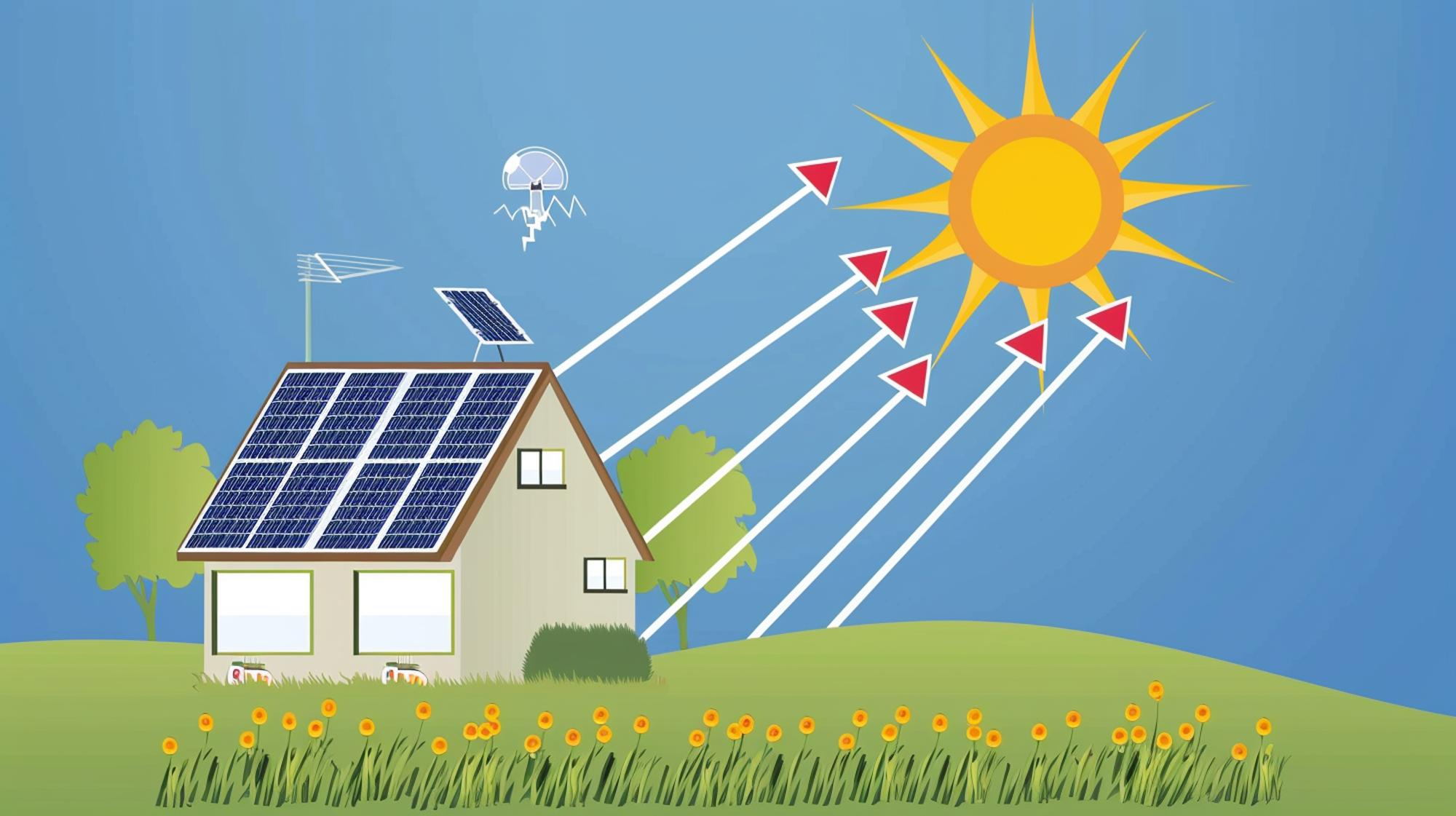
Solar energy is revolutionizing the field of renewable power. Could you please explain how sunlight is converted into usable electricity? This process is made possible by the photovoltaic (PV) effect, a phenomenon that enables solar panels to generate electricity. In this guide, we’ll walk you through the step-by-step process of solar energy conversion and explore the key components that make it work.
The Basics: How Sunlight Becomes Electricity
At the heart of solar power is the photovoltaic (PV) effect. The effect occurs when certain materials—mainly silicon-based semiconductors—convert sunlight directly into electricity. When photons (light particles) strike a semiconductor material, they excite electrons, breaking their atomic bonds and allowing them to move freely. This movement creates an electric current, which is then harnessed as electricity.
Step-by-Step: The Solar Energy Conversion Process
- Photon Absorption: Sunlight, composed of photons, hits the surface of a solar cell.
- Electron Excitation: The energy from the photons excites electrons in the semiconductor material, freeing them from their atomic bonds.
- Electric Field Formation: A built-in electric field inside the solar cell directs the free electrons toward the n-type layer and the “holes” (absence of electrons) toward the p-type layer.
- Current Flow: Connecting the n-type and p-type layers through an external circuit enables electron movement, creating an electric current.
Components of a Solar Power System
1. Solar Panels
These are assemblies of multiple solar cells that capture sunlight and initiate the photovoltaic process. The more efficient the panels, the more electricity they generate.
2. Inverter
Solar panels produce DC electricity, but most household appliances run on AC electricity. An inverter converts DC into AC, making it usable for homes and businesses.
3. Mounting Structures
Solar panels need to be securely positioned for maximum sun exposure. Depending on the tilt angle and rooftop design, we can either fix or adjust these structures.
4. Battery Storage (Optional)
Batteries store excess energy produced during the day, which can be used at night or during cloudy conditions. Such energy is essential for off-grid and hybrid solar systems.
5. Net Metering System
A net metering system measures the electricity fed back into the grid. Homeowners receive credits or compensation for surplus energy, making solar energy even more cost-effective.
Factors Influencing Solar Energy Conversion
Several factors affect the efficiency of solar panels:
1. Sunlight Intensity
The amount of solar energy received affects the electricity produced. Areas with higher sunlight exposure generate more power.
2. Panel Angle and Orientation
Proper positioning of solar panels ensures maximum sun exposure throughout the day, significantly improving efficiency.
3. Temperature
Although solar panels need sunlight, excessive heat reduces efficiency. Optimal performance occurs in cooler conditions with ample sunlight.
4. Shading
Obstructions like trees, nearby buildings, or dirt buildup on panels can significantly decrease efficiency. Proper placement is crucial for optimal performance.
Advancements in Solar Technology
Solar technology is rapidly evolving, with research focused on improving efficiency and reducing costs. Some recent innovations include
- Perovskite Solar Cells—These promise higher efficiency and lower manufacturing costs.
- Bifacial Solar Panels—Capture sunlight from both sides, increasing energy output.
- Solar paint and solar windows are revolutionary innovations that integrate solar technology into everyday surfaces and buildings.
Conclusion
Understanding how solar energy is converted into electricity showcases the remarkable synergy between nature and technology. As advancements continue, solar power is becoming one of the most viable solutions for a cleaner, sustainable future.
If you’re considering installing a solar power system, this knowledge can help you make informed decisions about maximizing your investment in renewable energy.
For a visual explanation of how solar panels convert sunlight into electricity, refer to the following video: How is solar energy converted into electricity?
Read Our blog, How Many Solar Module Types
Read Our blog, How Solar Refrigerators Are Changing Lives in Rural and Urban India
